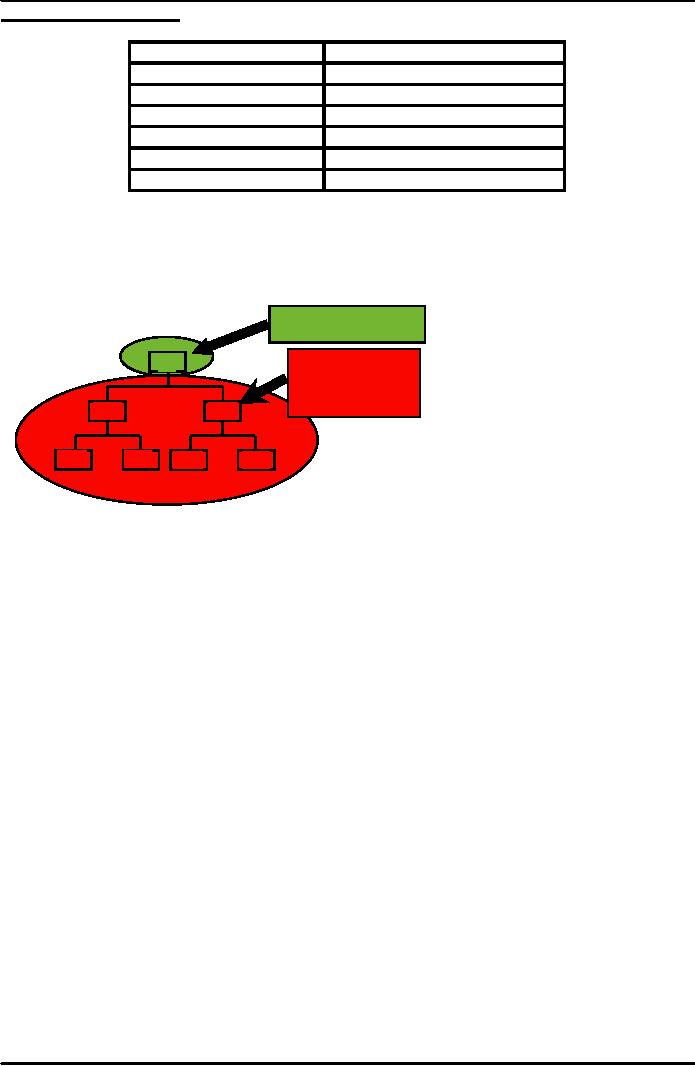 |

Production
and Operations Management
MGT613
VU
Lesson
07
Introduction
�Forecasting
demand is like forecasting weather
.Sometimes the forecast or prediction
fails completely
and
sometimes its near the
predicted value but still
not the exact value. Often
scientists call
forecasting
as
an educated guess, but even
then forecasting helps us to plan
our trips and journeys and
most
importantly
we as farmers make use of forecasting to
plant, harvest and take precautionary
measures.
�Forecasting
in business forms the basis
for budgeting and planning
for capacity, sales,
production,
inventory,
manpower, purchasing and more.
�Forecasting
allows the manager to anticipate the
future so then can plan
accordingly.
Introduction
�There
are
two major uses for
forecasts. One is to help the Operations
Manager plan the system and
the
other
one is to help him plan the
use of the system. These are
important concepts different
distinct but at
the
same time closely
lined.
Planning
the system refers to planning long term
plans about the type of
products
or services to offer, what
facilities and equipment to have, where to locate and
so on and so
forth.
Planning the use of the system
relates to short range and intermediate range
planning which
means
planning inventory workforce
resources, planning of purchasing and
production activities,
budgeting
and scheduling etc.
Thus
it can be said that planning
the systems more of a job of a senior manager,
birds eye view and
has
ORGANIZATIONAL
STRATEGY in it where as planning the use
of the system is an OPERATIONAL
STRATEGY
Business
Forecasting is more than just predicting
demand. Forecasting is also used to
predict profits,
revenues,
costs, productivity changes,
prices and availability of
energy and raw materials, interest
rates,
movements
of key economic indicators (GNP,
inflation and government loans) and
prices of stocks and
bonds.
Forecasting
is not an exact science. Even
with the availability of computers, and
algorithms, its
unable
to
make an exact prediction it requires Experience,
Managerial Judgment and Technical
expertise.
General
Responsibility lies with the
Marketing workforce but to
this day not a single
marketing forecast
has
been created without the
valuable contribution of the Operations
side.
FORECAST:
�A
statement about the future
value of a variable of interest such as
resource requirements, capacity
planning,
SCM and product or service
demand.
Forecasts
affect decisions and activities
throughout an organization
1.
Accounting, finance
2.
Human resources
3.
Marketing
4.
MIS
5.
Operations
6.
Product / service design
31

Production
and Operations Management
MGT613
VU
Applications
of Forecasts
Accounting
Cost/profit
estimates
Finance
Cash
flow and funding
Human
Resources
Hiring/recruiting/training
Marketing
Pricing,
promotion, strategy
MIS
IT/IS
systems, services
Operations
Schedules,
MRP, workloads
Product/service
design
New
products and services
Demand
Management
Demand
Management
Independent
Demand:
Finished
Goods/Services
Dependent
Demand:
A
Raw
Materials,
Component
parts,
Sub-assemblies,
etc.
C(2
B(4
D(2
E(1
D(3
F(2
Independent
Demand: What a firm can do
to manage it?
1.
Either be Active or Passive
meaning?
2.
Can take an active role to
influence demand
3.
Can take a passive role and
simply respond to
demand
Components
of Demand
�Average
demand for a period of
time
�Trend
�Seasonal
element
�Cyclical
elements
�Random
variation
�Autocorrelation
Finding
Components of Demand
Web-Based
Forecasting: CPFR Defined
�Collaborative
Planning,
Forecasting, and Replenishment (CPFR) a Web-based tool
used to coordinate
demand
forecasting, production and purchase
planning, and inventory replenishment
between supply
chain
trading partners. You will learn
about this in your later
part of the semester.
�Used
to
integrate the multi-tier or n-Tier
supply chain, including manufacturers,
distributors and
retailers.
32

Production
and Operations Management
MGT613
VU
�CPFR's
objective
is to exchange selected internal
information to provide for a
reliable, longer term
future
views of demand in the supply
chain.
�CPFR
uses
a cyclic and iterative approach to
derive consensus
forecasts.
Web-Based
Forecasting:
Steps
in CPFR
1.
Creation of a front-end partnership
agreement
2.
Joint business
planning
3.
Development of demand
forecasts
4.
Sharing forecasts
5.
Inventory replenishment
�Assumes
causal system( That same
system that existed in the past
will exist in future, where as
in
reality
unplanned events happen like
tax rate increase, introduction of a
competitors product or service
or
natural disasters)
�Forecasts
rarely perfect because of
RANDOMNESS (having no specific
pattern). Allowances
should
be
made for
inaccuracies.
�Forecasts
more accurate for groups vs.
individuals naturally because
forecasting errors in a group
tend
to
cancel out forecasting errors
for individuals.
�Forecast
accuracy decreases as time
horizon increases indicating it is
safe to make short range
forecasts
instead
of long term forecasts. If you
can recall we had talked
about Flexible and Agile
Corporations in
the
past.
33
Table of Contents:
- INTRODUCTION TO PRODUCTION AND OPERATIONS MANAGEMENT
- INTRODUCTION TO PRODUCTION AND OPERATIONS MANAGEMENT:Decision Making
- INTRODUCTION TO PRODUCTION AND OPERATIONS MANAGEMENT:Strategy
- INTRODUCTION TO PRODUCTION AND OPERATIONS MANAGEMENT:Service Delivery System
- INTRODUCTION TO PRODUCTION AND OPERATIONS MANAGEMENT:Productivity
- INTRODUCTION TO PRODUCTION AND OPERATIONS MANAGEMENT:The Decision Process
- INTRODUCTION TO PRODUCTION AND OPERATIONS MANAGEMENT:Demand Management
- Roadmap to the Lecture:Fundamental Types of Forecasts, Finer Classification of Forecasts
- Time Series Forecasts:Techniques for Averaging, Simple Moving Average Solution
- The formula for the moving average is:Exponential Smoothing Model, Common Nonlinear Trends
- The formula for the moving average is:Major factors in design strategy
- The formula for the moving average is:Standardization, Mass Customization
- The formula for the moving average is:DESIGN STRATEGIES
- The formula for the moving average is:Measuring Reliability, AVAILABILITY
- The formula for the moving average is:Learning Objectives, Capacity Planning
- The formula for the moving average is:Efficiency and Utilization, Evaluating Alternatives
- The formula for the moving average is:Evaluating Alternatives, Financial Analysis
- PROCESS SELECTION:Types of Operation, Intermittent Processing
- PROCESS SELECTION:Basic Layout Types, Advantages of Product Layout
- PROCESS SELECTION:Cellular Layouts, Facilities Layouts, Importance of Layout Decisions
- DESIGN OF WORK SYSTEMS:Job Design, Specialization, Methods Analysis
- LOCATION PLANNING AND ANALYSIS:MANAGING GLOBAL OPERATIONS, Regional Factors
- MANAGEMENT OF QUALITY:Dimensions of Quality, Examples of Service Quality
- SERVICE QUALITY:Moments of Truth, Perceived Service Quality, Service Gap Analysis
- TOTAL QUALITY MANAGEMENT:Determinants of Quality, Responsibility for Quality
- TQM QUALITY:Six Sigma Team, PROCESS IMPROVEMENT
- QUALITY CONTROL & QUALITY ASSURANCE:INSPECTION, Control Chart
- ACCEPTANCE SAMPLING:CHOOSING A PLAN, CONSUMER’S AND PRODUCER’S RISK
- AGGREGATE PLANNING:Demand and Capacity Options
- AGGREGATE PLANNING:Aggregate Planning Relationships, Master Scheduling
- INVENTORY MANAGEMENT:Objective of Inventory Control, Inventory Counting Systems
- INVENTORY MANAGEMENT:ABC Classification System, Cycle Counting
- INVENTORY MANAGEMENT:Economic Production Quantity Assumptions
- INVENTORY MANAGEMENT:Independent and Dependent Demand
- INVENTORY MANAGEMENT:Capacity Planning, Manufacturing Resource Planning
- JUST IN TIME PRODUCTION SYSTEMS:Organizational and Operational Strategies
- JUST IN TIME PRODUCTION SYSTEMS:Operational Benefits, Kanban Formula
- JUST IN TIME PRODUCTION SYSTEMS:Secondary Goals, Tiered Supplier Network
- SUPPLY CHAIN MANAGEMENT:Logistics, Distribution Requirements Planning
- SUPPLY CHAIN MANAGEMENT:Supply Chain Benefits and Drawbacks
- SCHEDULING:High-Volume Systems, Load Chart, Hungarian Method
- SEQUENCING:Assumptions to Priority Rules, Scheduling Service Operations
- PROJECT MANAGEMENT:Project Life Cycle, Work Breakdown Structure
- PROJECT MANAGEMENT:Computing Algorithm, Project Crashing, Risk Management
- Waiting Lines:Queuing Analysis, System Characteristics, Priority Model